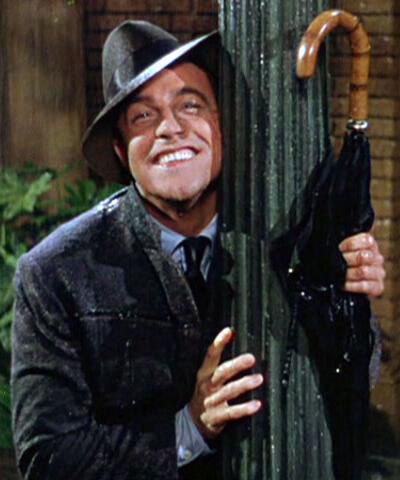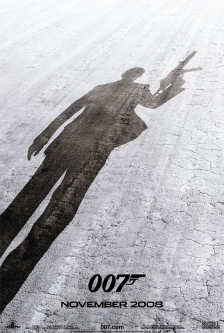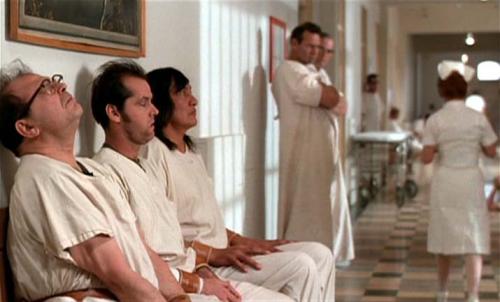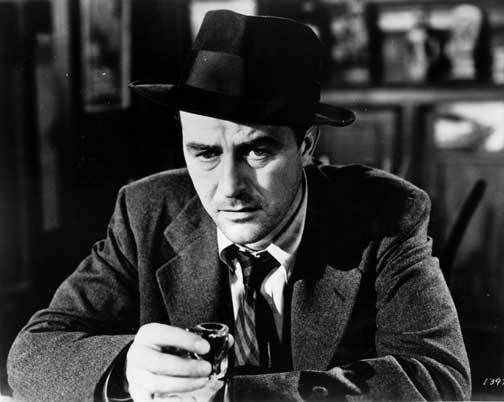 A cinema travelogue by Emma Lennox, who tries not to have a personal epiphany on her magical voyage to the much hyped Ballerina Ballroom Cinema of Dreams film festival.
A cinema travelogue by Emma Lennox, who tries not to have a personal epiphany on her magical voyage to the much hyped Ballerina Ballroom Cinema of Dreams film festival. Standing bedraggled in an empty street in Nairn, 16 miles north of Inverness and five hours from home, I looked at the pretty flowerbeds of the coastal Highland town and despaired. It was horrifyingly quaint. The sky was pressing upon my brow with burgeoning clouds and my head still ached in rhythm to the rails. I wondered why I was here; caught between the darkened heavens and gable ended homes. It had almost been a subconscious decision; whispers of a happening had blown around for months and sure enough, here it was; the Ballerina Ballroom Cinema of Dreams; an experimental day dream from the minds of Hollywood actress and local, Tilda Swinton, along with cinema know all, Mark Cousins. I had arrived for the tail end of the eight and a half day festival, to muse in the glowing projection of art, thoughts, ideals and beauty. But now the idea felt incongruous to the reality. Nothing as grungy and bohemian as an auteur's ego should be exposed in this austere setting. Children in identical blue sweaters spilled onto the streets beside me, a pre-fab house passed by on the back of a lorry ominously trailed by an ambulance, silently intoning us to bring out the dead. It was like the Truman Show; everything had its place and even life and death came pre packaged. The only litter on the streets was me; a lonely, disturbed journalist in the land of Oz, I skipped down the street to find the Ballerina Ballroom of dreams.
It was a Friday night and as the temperature dropped, the pubs prepared for the dead end drunkenness that fuels small town life. The Ballerina Ballroom was located at the end of a gauntlet of pubs, chip shops and bookies and already a long queue had formed. The locals were easy to spot; they had smaller versions of themselves attached to their hems and they smelled of home baking and village fairs. There were rumours that tickets had been selling out daily and it was in the grip of this fear, the gut churning thought that the dream would shatter before it even began, that I raced a complete stranger to the end of the line. I was a selfish urbanite, but there were others; they were the ones with square eyes from too much staring at laptop screens on a lonely night. They were the jittery ones lost without the intravenous media culture of multiplexes, DVDs, downloads, downpours, ipods, iphones, iporn, youtube, myface, needless, wireless, dot com pirates of the 21st century. This was a society where no citizen was more than half an hour from watching Singing in the Rain at any time, any place, and yet I had travelled 193 miles to watch it for the fourth time in an emaciated building gilded with the beard of a fortified William Shakespeare. The festival website said 'let's hope it rains after the screening!' because the organisers wanted us to drown in Gene Kelly's smile and wash the technicolor into the streets of Nairn.

The critics had been raving; everyone loved a fairytale and this was a kind of Disney wonderland without the vermin. It all began with a beautiful, androgynous princess (Swinton) who was visited by a long haired angel (her 8 ½ year old son, Xavier) proposing the question ‘what did people dream like before cinema was invented?’ This was her answer; a showcase of classic cinema, curated by chivalrous industry friends and around £25,000 of her own fortune. Visitors came from all corners of the kingdom and beyond, bringing gifts of baked goods and their own chairs. This kingdom was known as Ramshackle, but it was a special kind of bank rolled, industry approved, professional Ramshackle. A sweet story, but I wasn’t convinced this pyjama party really answered any questions. Swinton and Cousins’ festival was born out of the dream to commune with outsiders in cinematic appreciation, to bond through collective consciousness. Was it possible that who you watched with effects how you see? Perhaps, but if dreaming was their metaphor, I couldn't help but reflect that at night we dream alone.

If only I had remembered to pack my naiveté, then maybe I could join in on the childish spirit they were trying to invoke. Unfortunately I had buried it at the age of 9, in a small cardboard box under a cherry blossom tree, next to the remains of my dead hamster. But middle aged Mark and Tilda seemed to be under the illusion that being a child was fun. Eight and a half, they claimed, was the best age to discover cinema, it just so happened to tie in with the title of a Fellini classic. I remember spending my days as an eight and a half year old, longing to be eighteen and a half. There was always an uneasy feeling that I was missing out on the good things in life, things I couldn't yet comprehend like war and periods. From my vantage point at the wrong end of the queue I could see a small town square where children were playing in the remainder of the dusk light. They were flinging themselves like lemmings off the walls above some dustbins. “Don't jump from there, or I'm telling ya, you'll die!” shouted one girl to an older boy. Death, she had threatened. It all seemed so serious; their little faces were deep set in joyless expressions of determination, they were only ever moments away from broken friendships, heart breaking taunts and years of insecure angst. This was not the freedom that adults imagined a child's luxury to be and yet the older a person became, the harder they would kick and scream to return to this blissful state of torment. Swinton and Cousins had created a selection to show off the vivacity of cinema to children, because they wanted to witness the birth of their cinematic intellects. Splice together my earliest film memories, however, and you would witness a terrifying, psychedelic montage of pink elephants, blue meanies, laughing dragons, flying monkeys, melting faces, and walking carpets. This was a cinema of nightmares, its images were created to scar and trick the mind. The best filmmakers like Fellini, Godard, Bergman, were the ones who could disconcert and manipulate their audience. They didn't make comfortable, pretty pictures, they wanted to change our perceptions and take us to dark places. Was Ramshackle ready for this dawn of darkness?
The festival wouldn’t have survived in the urban sprawl of the mean cities. Nairn was once the 'Brighton of Scotland' and the town still remained opulent yet dilapidated with dishevelled buildings and helter-skelter pillars and scrolls. The wealthy Victorians were ostentatious types and there was maybe something of their kitsch pride left in the Ballerina Ballroom's pomp and programming; The Singing Ringing Tree, The Adventures of Sherlock Homes, Murder Most Foul and Dames all conformed to a nostalgic kind of whimsy. It was a strangely empty and impractical notion on which to create a film festival, or to base any part of life around. Whimsy was warm and friendly, it could hold my hand, but it wasn't going to shorten my bank statement in my time of need. It couldn't smooth my furrowing brow, or filter my email inbox, or find the right change for th e bus, or expand my shortening life, or peel an orange in one, or dry my sodden shoes. Just what exactly had whimsy ever done for me, or anybody else, except sell a few mobile phones and promote impossible lifestyles? I decided whimsy should be looked upon with suspicion, like the spindly legged gentleman who cries 'lollllleeeeee-pops' in Chitty Chitty Bang Bang. By the time I reached the front of the queue, Singing in the Rain had sold out. And as I skulked back to my floral, doll's house abode in petulant thought, it didn’t rain, it drizzled.
e bus, or expand my shortening life, or peel an orange in one, or dry my sodden shoes. Just what exactly had whimsy ever done for me, or anybody else, except sell a few mobile phones and promote impossible lifestyles? I decided whimsy should be looked upon with suspicion, like the spindly legged gentleman who cries 'lollllleeeeee-pops' in Chitty Chitty Bang Bang. By the time I reached the front of the queue, Singing in the Rain had sold out. And as I skulked back to my floral, doll's house abode in petulant thought, it didn’t rain, it drizzled.
The Ballroom queues had a life of their own and another had appeared when I returned to retry for the 9:30 screening, this time it took the shape of a two pronged tongue. The artist/writer John Byrne squeezed through in tight waist coat and clipped goatee. He looked exactly like a portrait of John Byrne, by the artist John Byrne. The sense of occasion was palpable. The great tongue licked its lips and finally I entered the dragon and purchased a ticket. I had never imagined before what a highland opium den would look like, but this seemed to fit the picture . Chinese lanterns hung in rows of glowing red orbs, the walls were black and pink and the occasional lightening strike tore across them. A third of the floor was covered with the bodies of lackadaisical cinema goers, stretched out on scattered cushions. When the main lights were extinguished a spot light hit the wall and lulled above our heads. Inexplicably Morrisey's strangled voice filled the air with the Smiths' There is a Light That Never Goes Out and Swinton and Cousins were on their knees beside the screen, swaying gently to the music. So this is what it had come to, I thought as the film finally began, cinema was a legal high. All these kids on cushions were getting mashed on 1950s song and dance. Gotta dance, make 'em laugh, no, no, no, yes, yes, yes, I love you, I love you, I love you, I love you. Gene Kelly's great swinging arms pirouetting his body, as he contorted gravity with magnetic limbs and his immaculate smile. Everyone was clapping and cheering like it was vaudeville and special ballerina umbrellas spun in unison when the title track reached its climax. What a glorious feeling, I'm haaaa- pee again. When the camera took its final swoop and bow the crowd dissolved into whoops and excitement. The image flickered and died and the show was over. It was nice, it was pretty, I walked down the high street, through the midnight brawling drunks, with a smile on my face.
. Chinese lanterns hung in rows of glowing red orbs, the walls were black and pink and the occasional lightening strike tore across them. A third of the floor was covered with the bodies of lackadaisical cinema goers, stretched out on scattered cushions. When the main lights were extinguished a spot light hit the wall and lulled above our heads. Inexplicably Morrisey's strangled voice filled the air with the Smiths' There is a Light That Never Goes Out and Swinton and Cousins were on their knees beside the screen, swaying gently to the music. So this is what it had come to, I thought as the film finally began, cinema was a legal high. All these kids on cushions were getting mashed on 1950s song and dance. Gotta dance, make 'em laugh, no, no, no, yes, yes, yes, I love you, I love you, I love you, I love you. Gene Kelly's great swinging arms pirouetting his body, as he contorted gravity with magnetic limbs and his immaculate smile. Everyone was clapping and cheering like it was vaudeville and special ballerina umbrellas spun in unison when the title track reached its climax. What a glorious feeling, I'm haaaa- pee again. When the camera took its final swoop and bow the crowd dissolved into whoops and excitement. The image flickered and died and the show was over. It was nice, it was pretty, I walked down the high street, through the midnight brawling drunks, with a smile on my face.

By morning pink fuchsias had been uprooted in flaccid, drunken rebellion, their decapitated petals scattered into a floral carpet, and trodden into the ground by the ever earnest Ballroom queue. The last film I was to see before my adventure was over was a short animation about a diabolical train journey entitled Mrs Tutli Putli. I felt a shiver of excitement when the children were asked to leave the room. Get out kids, it's adult time, I didn't do all this growing up just to baby sit your fragile little minds. I sat between a poet and a copywriter, “yes I do make a living from it” the poet said, because I had forgotten to ask. Mystery trains, ghost trains, strangers on a train, brief encounters, wrecks, disasters, passion and steam, the railway laid picaresque lines in the motion picture, but Mrs Tutli Putli never arrived at a destination, hers was a transformative journey. I thought about it on my own train ride home. How did people tell stories before travel was invented? Travelling, like cinema, was about the parable of the self, it was individualistic and ego centric. We could dream of coming together but the journey we had to face alone. Poor Mrs Tutli Putli, and her great, sparkling empathetic eyes, I could still see her searching the empty carriages of the high jacked train in the dead of night. The bad dreams had returned. What if I was to suffer the same fate as Mrs Tutli Putli? After watching the 17 minute short, I wasn't exactly sure what that fate was, but it was dark and disturbing; a deeply unsettling synthesis of inner terror and existential angst. She was alone, but in the presence of living movement, propelling her onward and altering her physicality.
Through the train windows I observed unharvested fields and overflowing rivers of the penultimate Summer days, fit to burst and give way to the sodden afterbirth of early autumn. The farmers were out with their contraptions, ready to pierce their livelihood through the heart. We travelled through the towns and I saw the imperial vestiges of the Victorian dream, its rusty girders like giant hands gripping the rail stations of Inverness, Perth and Stirling. Finally we arrived into the post industrial hubris that was Glasgow, with its shattered buildings and techno spaces. I felt safe. I was back in the gruel of civilisation, and back to watching comfortable nightmares on my 15 inch laptop.
 As the latest adventure is released, comedian Keith Farnan, takes a look at the blond Bond's acting credentials.
As the latest adventure is released, comedian Keith Farnan, takes a look at the blond Bond's acting credentials. Besides the Francis Bacon’s bit of Sausage (Yes, I had to do that), Craig had already staked his reputation with earnest real-life portrayals of Ted Hughes in Sylvia in 2003 and Perry Smith in Infamous, the excellent adaptation of Truman Capote’s In Cold Blood three years later. (It’s the one you didn’t see because you had already watched the Oscar winning Capote the same year.) Each of these roles gave Craig the edge he would need to hop into the tight blue trunks and stride out of the sea like Neptune. Ted Hughes could not have been more of a womaniser, more of a charmer, and he was so very incredibly English in that robust, Yorkshire, How's-your-Hovis-trouble-a-t'
Besides the Francis Bacon’s bit of Sausage (Yes, I had to do that), Craig had already staked his reputation with earnest real-life portrayals of Ted Hughes in Sylvia in 2003 and Perry Smith in Infamous, the excellent adaptation of Truman Capote’s In Cold Blood three years later. (It’s the one you didn’t see because you had already watched the Oscar winning Capote the same year.) Each of these roles gave Craig the edge he would need to hop into the tight blue trunks and stride out of the sea like Neptune. Ted Hughes could not have been more of a womaniser, more of a charmer, and he was so very incredibly English in that robust, Yorkshire, How's-your-Hovis-trouble-a-t'


























